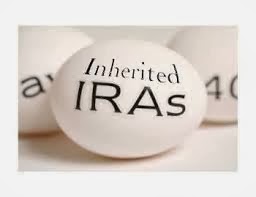Search This Blog
Welcome to Your Ultimate Resource for Cross-Border and U.S International Tax Compliance! Navigating the complex world of taxes can be overwhelming, especially with cross-border, foreign compliance, and US international tax issues. Whether you are an individual or a small business owner, my blog is here to take the headache out of searching for answers. Drop a word, suggest a topic, share your thoughts, questions, and experiences. SPREAD THE BUZZ AND LET OTHERS KNOW ABOUT THIS VALUABLE RESOURCE!
Posts
Showing posts from 2013
Clearing Up Common Myths about Life Insurance Proceeds
- Get link
- X
- Other Apps
Streamlined Procedure And Foreign Bank Account Regs For Non-Resident US Citizens
- Get link
- X
- Other Apps
Small Business Payroll: Mistakes & How To Avoid Them
- Get link
- X
- Other Apps
Final Regs On The 3.8% Net Investment Income Tax
- Get link
- X
- Other Apps
Offshore Voluntary Disclosure Program: The Basics (2013)
- Get link
- X
- Other Apps
Don't Look a Gift Horse In the Mouth: All About Gifts & Taxes
- Get link
- X
- Other Apps
Inheriting an IRA? Here's What You Need To Do!
- Get link
- X
- Other Apps
The ABCs of RMDs: Cracking the Code on Required Minimum Distributions
- Get link
- X
- Other Apps
Search By Category
Search By Category
- 130843-131
- 2009 Offshore Voluntary Disclosure Program1
- 2011 Offshore Voluntary Disclosure Initiative1
- 20131
- 2015 Tax Law Changes1
- 2016 form 11201
- 20171
- 2017 Tax Season1
- 2018 Tax Changes1
- 2020 Planning Ahead1
- 2020 Tax Season2
- 3.8%2
- 401(k)6
- 401(k) for Small Business1
- 401k1
- 403 (b)1
- 4506-T1
- 457 (b)1
- 501 (c) (3)1
- 529 Plan2
- 6038D1
- 70 1/2 years old1
- 96441
- AAA1
- ACA1
- Accelerated Death Benefits1
- Accidental Americans2
- Accounting Habits1
- Advance Health Care Directives1
- Affordable Care Act1
- Age 59 1/21
- Agrawal DC WI 12/9/20191
- Airbnb1
- Alien1
- Alimony; Divorce Payments1
- American Abroad2
- Announcement 2012-451
- Annual Exclusion1
- Annuities2
- April 182
- Armed Forces Move1
- Back Taxes1
- Bank Secrecy Act2
- Bankruptcy1
- Bankruptcy Discharge1
- beneficial ownership1
- Beneficiary2
- Bequest2
- Big Ticket Items1
- Bitcoin2
- Bitcoin cash2
- Bittner1
- Black Friday1
- blockchain2
- Bonafide Residence Test1
- Bonus1
- Branch Office In US1
- BSA E-Filing System1
- BSA E-Filing System.1
- Burial Services1
- Business6
- Business Owners2
- Buyer Beware1
- Campus Health Insurance1
- Canada1
- Canadians1
- Cancellation of Debt1
- Capital Gains1
- Capital Loss Harvesting1
- Cash Flow1
- Casualty Losses1
- Catch Up Contributions1
- Categories of Filers1
- Certain Citizens1
- Certification1
- Change of Address1
- Changes to Itemized Deduction2
- Chapter 111
- Chapter 31
- Chapter 41
- Chapter 71
- Chapter 91
- Charitable Contributions2
- Child Care1
- Child Care Costs1
- Child Support1
- Children1
- Children's Savings1
- Choosing between an S Corp Vs an LLC2
- Citizen Based Taxation1
- Citizenship Based Taxation1
- Claim Exclusion1
- Closely Held.1
- Closer Connection2
- College Expenses2
- College Savings3
- College tax Credits1
- Commingling Expenses1
- Common Law Rules1
- Computer1
- Conference Agreement1
- Contributions1
- Coronavirus1
- Corporate Transparency Act1
- Corporations2
- Court Case3
- Court Case2
- Court Case Versus FATCA.1
- Covered Expatriate7
- Covid-191
- Credit Card Debt1
- Credit cards2
- Credit Report1
- cross border inheritance/ gift1
- cross border tax1
- Crunching Numbers1
- Cryptocurrency2
- Currencies2
- Currency1
- Custodial Accounts1
- Data Plans1
- Data Safety1
- Data Security1
- Deadline2
- Death Benefits1
- Debt1
- Debts1
- Decedent1
- Deducted1
- Deduction1
- Delinquent FBARs6
- Demystified2
- Denial of Passport1
- Department of Labor1
- Dependent Care1
- dependents on social security1
- Designation Form1
- Detroit1
- Disabilities1
- Disaster Loan1
- Distributions1
- divorce1
- Divorce Decree1
- Documents1
- Documents for Tax Filing1
- Doing Business In The US1
- DOL1
- dol.gov1
- DOMA1
- Donations2
- Draft Form 89601
- dual status returns1
- Due Date1
- Due Diligence1
- E-Commerce1
- EA2
- Ebay1
- ECI1
- Effectively Connected Income5
- Elder Law1
- Eligibility; Simple Risk; OVDP3
- Email Encryption1
- Emergency Check1
- Employee5
- Employer Contributions1
- Employer Retirement Plans3
- End Of Life Planning1
- Energy Efficient Home1
- Enrolled Agent14
- Enrolled Agents1
- Entity Filing 89381
- Entity in the US1
- Entity Selection.2
- ERISA1
- Estate Planning5
- Estates2
- Etsy1
- Exclusions1
- Exemptions from GSTT1
- Exit Planning1
- Exit Tax2
- Expat9
- expat individual2
- Expatriate6
- Expatriate Taxation6
- Expatriation7
- Expenses & Deductions1
- Expire1
- Expired ITINs2
- Extension2
- Extension of Time To File1
- Extensions1
- F-1 Visa1
- Failure To File Penalty3
- Failure To Pay Penalty1
- FAQ 81
- Farhy2
- FATCA26
- FATCA Penalties2
- FBAR31
- FBAR Court Case2
- FBAR Deadlines; new FBAR Deadlines3
- FBAR for Children1
- FBAR Penalties5
- FBAR Rules1
- FDAP Income3
- FEIE1
- Fellowships1
- Filing1
- Filing Jointly1
- Filing My Taxes2
- Filing Status1
- Filing Taxes1
- Final Regulations2
- Financial accounts1
- FinCEN Form 11410
- FinCEN Form 114.2
- FinCEN form 114a1
- FIRPTA1
- Flexible Spending Account1
- Flow-Through Income1
- Foreign5
- Foreign Account Reporting for Corporations2
- Foreign Accounts8
- Foreign Annuities1
- Foreign Assets1
- Foreign Bank3
- Foreign Bank Account Regulations11
- Foreign Bank accounts2
- Foreign Contributions1
- Foreign Corporations Doing Business in the US1
- Foreign Corporations.1
- Foreign Country1
- Foreign Earned Income Exclusion9
- Foreign Executives1
- Foreign Fianancial Account2
- Foreign Financial Account3
- Foreign Financial Institution1
- Foreign Freelance Income1
- Foreign Gifts2
- Foreign Grantor Trust1
- Foreign Housing Exclusion1
- Foreign Income4
- Foreign Mutual Funds1
- Foreign Nongrantor trust1
- Foreign Partner1
- Foreign Partner Reporting1
- Foreign Partnerships1
- Foreign Pensions3
- Foreign persons2
- Foreign Real Estate2
- Foreign Retirement1
- Foreign Social Security2
- Foreign Student1
- Foreign Tax Credit9
- Foreign Trust1
- Foreign-Owned US Corporations1
- Form 10403
- Form 1040NR1
- Form 1099-MISC2
- Form 11161
- Form 140391
- Form 24411
- Form 25551
- Form 35206
- Form 3520-A2
- Form 39031
- Form 433 series1
- Form 48681
- Form 53291
- Form 54714
- Form 54722
- Form 7092
- Form 86151
- Form 86211
- Form 88141
- Form 88221
- Form 88331
- Form 88801
- Form 89191
- Form 893813
- Form 89601
- Form 9401
- Form 9411
- Form 94651
- Form SS-81
- Form W-72
- Form W-8 BEN; Individuals1
- Form W-8BEN1
- Form W41
- France1
- Freelance Income1
- Freshman 151
- From 54711
- FSA2
- FSLA1
- FTC2
- FUTA1
- Future Interests1
- Generation Skipping Transfer Tax1
- Generations1
- Getting Ready1
- Gift of Property1
- Gift Tax2
- Gift Tax Returns1
- Gifts4
- Gifts from Foreign Persons4
- Gifts from Foreign sources3
- Gig Economy1
- Good Habits1
- Grantor1
- Grants1
- Green Card Holders3
- Greencard2
- GST1
- GSTT1
- Health1
- Health Coverage1
- Health Insurance2
- Hillary Clinton1
- Hire an Enrolled Agent3
- Home1
- Home Mortgage Interest2
- Home Office1
- Home Office Deduction1
- Home Ownership1
- Homeowners1
- Household Employee1
- Housing1
- How long do I keep records?1
- How to Pick a Preparer1
- HSA1
- ID Theft1
- Identity1
- Identity Theft3
- Identity Thief1
- IGA1
- Incorrect Information1
- Incorrect Refund1
- Independent Contractor4
- India2
- Individual52
- Individual Retirement Accounts8
- Individual Tax Identification Numbers1
- Individual Taxpayer Identification Number4
- Individual.1
- Individuals23
- Inheritance from Foreign Persons2
- Inheritances2
- Inherited IRAs2
- Injured Spouse1
- Innocent Spouse1
- Installments1
- Insurance Marketplace1
- Insuranse Coverage1
- Internal Revenue Service2
- Internal Revenue Service Bankruptcy1
- International1
- international tax1
- International tax planning4
- international tax reporting1
- Investing in the US1
- Investments in Foreign Corporations2
- Investments In Foreign Pensions & Annuities2
- IRA7
- IRA Beneficiaries1
- IRA Contribution Limits1
- IRA with Basis1
- IRAs1
- IRC 14111
- IRC 2151
- IRC 9111
- IRS2
- irs.gov1
- Itemize deductions2
- Itemized deduction1
- Itemized Deductions3
- ITIN5
- Joint Accounts1
- Joint Return1
- Journal Of Accountancy1
- July 15th1
- kiddie Accounts1
- Kiddie Tax1
- Kids2
- Last Minute Filer1
- Late Filing1
- Late Returns1
- Latest Changes1
- Liens1
- Life Insurance1
- Life Insurance Proceeds1
- Limited Liability Company1
- Living Abroad1
- Loans1
- Lyft1
- MAGI Thresholds1
- Manasa Nadig15
- Marital Status1
- Mark-to-Market1
- Marketplace1
- Marriage1
- Married1
- Married Filing Status1
- May 151
- Meal Plan1
- Medical Expense Deduction2
- Medical Expenses1
- Medicare Tax3
- Memorial Services1
- MIP1
- Missing W21
- Mistakes Expat Make3
- Moore2
- Moving Expense1
- moving expenses2
- Municipalities1
- Mutual funds1
- myRA1
- NAEA1
- Nanny Tax1
- National Taxpayer Advocate Service1
- Net Income1
- Net Investment Income3
- Net Investment Income Tax6
- New Deadline1
- New Policy1
- New Regulations2
- Newly-Weds1
- NIIT4
- Non Profit Organizations1
- Non-Compliance with FBAR Requirements7
- Non-Immigrant Work Visa1
- Non-Profit1
- Non-Resident1
- Non-resident alien2
- Non-Resident Individuals2
- Non-Resident Spouse1
- Non-Resident U.S. Citizens; Compliance Risk1
- Non-Resident US Taxpayers1
- non-US Citizen1
- Non-Willful2
- Nonresident American1
- Notice to Employees1
- NRA Holding US Real Estate1
- Obamacare3
- Obamacare Tax3
- Obituaries1
- OECD1
- Offer In Compromise1
- Offshore Mutual funds1
- Offshore Voluntary Disclosure Initiative1
- Old ITINs2
- One Rollover Per Year1
- Online Payment Agreement Tool1
- Online Sales1
- OPT1
- Ordinary and Necessary Business Expenses1
- OVDI1
- OVDP Closed1
- OVDP process3
- Pandemic1
- Partnerships2
- Passive Foreign Investment Companies1
- Passive Income1
- Passport2
- PATH Act2
- Payment Agreement1
- Payroll3
- Payroll Mistakes2
- Payroll Tax1
- Payroll Taxes1
- Penalties3
- Penalty3
- Pensions2
- Perform Services1
- Permanent Residents1
- Personal Information1
- PFIC1
- PFICs1
- Physical Presence Test2
- Plan Contributions1
- Planning1
- Planning Your Withholding1
- POD Trust1
- Pointers1
- post-tax contributions1
- Pre-immigration tax planning2
- pre-tax contributions1
- Preparer1
- Preserve Tax-Exempt Status1
- Printer1
- Procedure1
- Procrastinators1
- Property Taxes1
- Proposed Regulations1
- Protecting Americans from Tax Hikes Act2
- Protecting your Identity1
- Protection from Identity Theft2
- Pub 15; sba.gov1
- Pub 5902
- Pub 9291
- Publication 5021
- Publication 5211
- Publication 541
- Publication 950;1
- QBI1
- QCD1
- QEF1
- QLACs1
- QSBS1
- Qualified Business Deduction1
- Qualified Electing Fund1
- Qualified Longevity Annuity Contracts1
- Rainy Day1
- Real Estate1
- Real Estate Investment in the US1
- Reasonable Cause1
- Record Keeping3
- Refresher1
- Refund1
- Refunds in Limbo1
- Regular Method1
- REIT1
- Relief1
- Relinquishment1
- Renounce Green Card2
- Rental Income2
- Renunciation1
- repatriation1
- Repatriation Tax2
- Reporting Foreign Bank accounts1
- Required Minimum Distributions4
- Researcher1
- Residency1
- Residency Based Taxation1
- Resident1
- Resident Alien1
- Residential Energy Efficiency Credits1
- Retire Abroad3
- Retirees Move1
- Retirement1
- Retirement accounts8
- Retirement Planning7
- Retirement Savings4
- Retirement Savings Credit1
- Revocation of Passport1
- Revoke Exclusion1
- RMD2
- RMDs1
- Rollover2
- Rollovers1
- Room & Board1
- ROTC1
- Roth2
- Roth 401(k)5
- Roth Conversions2
- Roth IRA8
- Roth IRA Contribution Limits1
- Roth IRA's1
- S CORPS3
- Sales Tax2
- SALT1
- Saving for Kids1
- Savings Clause1
- SBE1
- Schedule A5
- Schedule C4
- Schedule E2
- Schedule F1
- Schedule H1
- Scholarships1
- Section 199A1
- Section 501(c)(3)1
- Secure Act2
- Secure Portal1
- Self-Employment2
- Self-Employment Tax1
- Selling To US Customers1
- Senior Tax Planning1
- Sensitive Information1
- Seriously Delinquent Tax Debts1
- Setup Payroll; Payroll Penalties2
- Shared Economy1
- Signature authority1
- Simplified Option1
- Small business5
- Small Business Owners6
- Small Business Owners; Cyber; Cyber-Security; Cyber Protection; Network Protection;1
- Smart Giving1
- Smart Phones1
- SME1
- Social Security4
- Social Security Benefits1
- Social Security Benefits While Abroad5
- Social Security Numbers5
- Social Security Tax1
- Sole Proprietor2
- Sooner the Better1
- Special Needs1
- Specified Domestic Entity1
- Specified foreign Asset1
- Specified Foreign Financial Assets1
- Specified Individuals3
- Spouse3
- SS-51
- SSA2
- SSI1
- SSN3
- Standard Deduction1
- Start-Up1
- Start-Up Expenses1
- State Payroll1
- State Residency1
- state tax1
- Stimulus Check1
- Streamlined Compliance Procedure5
- Stretch IRA1
- Student3
- Student Loans3
- Student Loans Paid Off1
- Students1
- Substantial Presence2
- Summer Camp1
- Summer Jobs1
- Summer Jobs Taxes1
- Surrender1
- Survivors Move1
- SUTA1
- tax1
- Tax Blog1
- Tax Consequences1
- Tax Court2
- Tax Cuts and Jobs Act2
- Tax Deadline3
- tax due1
- Tax Due Date1
- Tax Exempt1
- Tax Extenders1
- Tax Extenders Bill1
- Tax Loss Harvesting1
- tax papers1
- Tax Planning3
- Tax Preparation1
- Tax Preparer1
- Tax Professional1
- Tax Reform1
- Tax Reform And Jobs Act1
- Tax Season2
- Tax Straggler1
- tax time1
- Tax Treaty10
- Tax Withholding1
- Tax-Exempt Organizations1
- Taxable1
- Taxes4
- Taxpayer Abroad1
- TCJA1
- TD F 90-22.11
- TDF90-22.11
- Textbooks1
- TFRP1
- Thresholds1
- Tie-Breaker Rules1
- Tip Income1
- Tips1
- Tips for Newly Weds1
- Tips on Charities1
- Totalization Agreement2
- Totten Trust1
- Track my refund1
- Traditional 401(k)2
- Traditional IRA6
- Traditional Vs Roth IRA3
- Travel1
- Treaty Interpretation1
- Treaty Provisions2
- Trump Tax Plan1
- Trust Fund Recovery Penalty1
- Trustee1
- Trusts3
- Tuition & Fees Deduction1
- UAE1
- Uber1
- UGMA1
- Unemployment1
- US citizen Abroad6
- US Citizens2
- US Citizens Overseas7
- US income1
- US Person1
- US Source Income2
- US-Canada1
- USPS1
- Victim1
- Virtual Currency2
- Visa2
- visa holders1
- Voluntary Classification Settlement Program.1
- Voluntary Disclosure1
- Volunteer Miles2
- Volunteer Time2
- Volunteering2
- W21
- Wages1
- Waiver1
- What is Chapter 9 Bankruptcy?1
- When Should I File My Taxes1
- Where to look for W2?1
- Where's My Refund? IRS1
- Willful Non-Compliance2
- Withholding1
- Withholding Calculator1
- Withholding Tax1
- www.slugbooks.com1
- Year end Tax Planning Tips3
- Your Payments While You Are Outside the United States1






